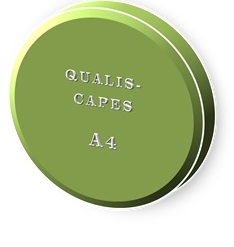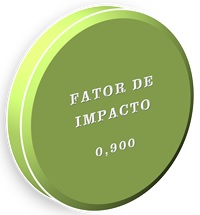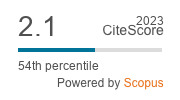Submission Guidelines
All manuscripts submitted to the Revista Caatinga have to be original and not previously submitted to other journal or means of publication. The Revista Caatinga publishes Scientific Article.
SUBMISSION OF MANUSCRIPTS
All manuscripts must be submitted exclusively online at the Revista Caatinga website. Only manuscripts written in English and Portuguese may be submitted. However, once the manuscript is accepted by the Editorial Board, the author will be required to have it translated into English. Manuscripts will be published only in English. Choosing the company or translator to translate the manuscript is at the discretion of the author. But it is mandatory that manuscripts in English are reviewed by one of the following companies:
http://www.proof-reading-service.com
http://www.academic-editing-services.com/
http://www.publicase.com.br/formulario.asp
http://www.editage.com.br/manuscriptediting/index.html
http://www.journalexperts.com
http://www.webshop.elsevier.com/languageservices
http://wsr-ops.com
http://www.journaleditorsusa.com
http://www.queensenglishediting.com/
http://www.canalpage.com
http://www.stta.com.br/servicos.php
http://americanmanuscripteditors.com/
RP Traduções - traducoes.recp@gmail.com
GUIDELINES FOR MANUSCRIPT PREPARATION
- Typing format: only MS Word documents (.doc or .docx) or compatible text editor formats are accepted; graphs must be created in MS Windows compatible software, e.g. Excel; .gif and .jpeg are the required formats for figures and photographs, respectively. Manuscripts must not exceed 20 (twenty) 1.5-spaced pages, in A4 format, 12 Times New Roman font, 1 cm first line left indent in each paragraph. There must be 2.5 cm margins on all sides. All pages must be numbered consecutively in the right bottom corner, and lines must be numbered consecutively too. For further guidelines, contact the Editorial Board.
- File size: submitted files must not exceed 2MB.
- Manuscript organization - the following elements are required: title, authors’ names, abstract, keywords, introduction, material and methods, results and discussion, conclusions, acknowledgements (optional), and references.
Title and Título: must be written in capital letters, bold, centered, with a maximum of 15 words. There must not be subtitle and abbreviations. Scientific names should be used only for unknown species. The headings (abstract, introduction, material and methods, results and discussion, conclusions, acknowledgements, and references) must be written in capital letters, bold, and left-aligned.
Authors’ names should be written in full, in capital letters, sequentially and separated by commas, and centered. Authors’ names must appear only in the final version of the manuscript. Authors’ names, the footnote, and the corresponding address must be omitted from the first version of the submitted manuscript.
In addition to insert authors’ names and corresponding address in the final version of the manuscript, there must be a footnote in the first page in order to identify the authors’ affiliation (center/department, institution, city, state, and country), full address and e-mail of all authors. The corresponding author must be indicated by an asterisk (*).
The footnote must comprise information on the nature of the manuscript (whether it is part of a master’s or doctoral thesis) and references on collaborating institutions. See the following example:
_________________________
*Corresponding author
1Received 23 May 2019; accepted 23 Aug 2019
Nature of the manuscript (whether it is part of a master’s or doctoral thesis)
2Center/Department (unabbreviated), Institution (unabbreviated), City, State (abbreviation), Country; E-mail – ORCID.
Example:
2Department of Plant Sciences, Federal Rural University of the Semi-arid Region, Mossoró, RN, Brazil; analucia-dossantos@hotmail.com – ORCID: 0000-0002-5837-0544.
OBSERVATION: If two or more authors have the same affiliation, it is not necessary to duplicate information, but add email address and ORCID at the end.
Submitted manuscripts must not exceed 8 authors.
** Authors’ names cannot be changed afterwards.
** All authors have to register at the journal website.
Abstract and Resumo: from 100 to 250 words.
Keywords and Palavras-chave: a minimum of 3 (three) and a maximum of 5 (five) dot-separated keywords (not mentioned in the title), with the first letter capitalized (see manuscript model).
OBSERVATION: in case of manuscript written in English, the title, abstract, and keywords must also be in Portuguese (título, resumo, and palavras-chave). The English headings must come first and then the Portuguese ones.
Introduction: maximum of 550 words with updated quotations related to the issue discussed in the manuscript.
Conclusions: continuous text without headings.
Acknowledgements: after the conclusions authors may mention people or institutions, and clearly state the reasons for the acknowledgements.
- Tables: portrait orientation, numbered consecutively with Arabic numerals on the top, 12 Times New Roman font.
- . Do not use vertical lines in tables. Horizontal lines must separate the title, the table header, and the body of the table. Each cell must contain a single value. Do not use bold or capital letters in the table header. Tables should be 8.2 cm wide and not exceed 17 cm wide.
- Example:

- Figures: portrait orientation. Graphs, photographs, and drawings shall be generally named as Figure, followed by a progressive Arabic numbering, and legend on the bottom. Graphs must be created in Microsoft-compatible software. The recommended resolution for figures is at least 300 dpi (dots per inch). Figures should be 8.5 cm wide, and not exceed 17 cm wide. Authors must use 10 Times New Roman font, do not use bold letters for graph axis labels. Axis lines must be black and 1.5 mm thick. Landscape-oriented Tables or Figures and the ones larger than 17 cm are not accepted. Tables and Figures must be placed soon after the first mention in the text.
Attention: At the galley proof stage, the corresponding author may be required to perform changes in figures and email them back to the Revista Caatinga.
- Equations: must be created in the MS Word equation editor, numbered (progressive Arabic numbering), and use Times New Roman font. Equations must meet the following requirements:
Regular Latim letters = font size 12
Subscripts/superscripts = font size 8
Sub-subscripts/super-superscripts = font size 5
Symbols = font size 18
Aggregation symbols = font size 14
These commands can be found in the MS Word equation editor.
REFERENCES
References are listed in alphabetical order by the first author’s last name and must be typed in 1.5-cm spacing both between rows and the references themselves. Authors must use justified alignment (Ctrl + J). The list of references must follow ABNT NBR 6023 standard, of August 2002. AT LEAST 70% OF ALL REFERENCES MUST COME FROM INDEXED SCIENTIFIC JOURNAL PAPERS PUBLISHED IN THE LAST 10 YEARS.
Example: If the article has 30 references (maximum number of references) and we are in the year 2025, then:
70% of the references must be from the years 2016 to 2025. (21 references)
Only 30% of references from before 2016 (9 references).
The journal’s title abbreviation is not accepted. Authors should use from 20 to 30 references. * Do not exceed the limit of 30 references.
AUTHORS SHOULD NOT QUOTE MANUSCRIPTS PRESENTED AND PUBLISHED IN CONGRESS PROCEEDINGS OR SIMILAR PUBLICATIONS.
Quoting authors in the running text: ABNT NBR 10520 standard, of August 2002, must be followed.
Example: use Torres (2008) or (TORRES, 2008) to quote 1 author; use Torres and Marcos Filho (2002) or (TORRES; MARCOS FILHO, 2002) to quote 2 authors; use França, Del Grossi and Marques (2009) or (FRANÇA; DEL GROSSI; MARQUES, 2009) to quote 3 authors; use Torres et al. (2002) or (TORRES et al., 2002) to quote more than 3 authors.
REFERENCE GUIDELINES
** Up to 3 authors
All authors’ names are mentioned in the order they appear in the publication, and they must be separated by semicolon.
Example:
TORRES, S. B.; PAIVA, E. P. PEDRO, A. R. Teste de deterioração controlada para avaliação da qualidade fisiológica de sementes de jiló. Revista Caatinga, 19: 1-9, 2010.
** More than 3 authors
Mention only the first author’s name followed by et al.
Example:
BAKKE, I. A. et al. Water and sodium chloride effects on Mimosa tenuiflora (Willd.) poiret seed germination. Revista Caatinga, 19: 261-267, 2006.
** Name suffix
Example:
CARVALHO JÚNIOR, S. B. et al. Produção e avaliação bromatológica de espécies forrageiras irrigadas com água salina. Revista Brasileira de Engenharia Agrícola e Ambiental, 14: 1045-1051, 2010.
REFERENCE STYLE
A) JOURNAL PAPERS
AUTHOR’S NAME (use et al. for more than 3 authors). Manuscript title. Journal name, volume: page numbers, year.
Example:
RIBEIRO, R. M. P. et al. Dinâmica do crescimento de cultivares de gergelim. Revista Caatinga, 31: 1062-1068, 2018.
*Observation: if there is no volume number, use s/v. instead.
Example:
RIBEIRO, R. M. P. et al. Dinâmica do crescimento de cultivares de gergelim. Revista Caatinga, s/v.: 1062-1068, 2018.
B) BOOKS, BOOKLETS, COLLECTION, AND NEWSLETTER
AUTHOR (use et al. for more than 3 authors). Title: subtitle (if any). Issue (if any). Place (city) of publication: Publisher, year. Page numbers or volume. (series title and number - in case of booklets)
EMBRAPA - Empresa Brasileira de Pesquisa Agropecuária. Tecnologias de produção de soja região central do Brasil 2004. 1. ed. Londrina, PR: Embrapa Soja, 2003. 237 p.
Ex: RESENDE, M. et al. Pedologia: base para distinção de ambientes. 2. ed. Viçosa, MG: NEPUT, 1997. 367 p.
OLIVEIRA, A. I.; LEONARDOS, O. H. Geologia do Brasil. 3. ed. Mossoró: ESAM, 1978. 813 p. (Coleção mossoroense, 72).
MELO FILHO, H. F. R.; SILVA, F. B. R.; JACOMINE, P. K. T. Levantamento detalhado dos solos da Fazenda. Rio de Janeiro: EMBRAPA, 1982. 59 p. (Boletim Técnico,78).
RIBEIRO, F. E. et al. O coqueiro-anão no Brasil. Aracaju: EMBRAPA, 1999. 22 p. (Documentos, 8).
C) CHAPTERS OR OTHER TITLED PARTS IN BOOKS OR BOOKLETS
AUTHOR OF THE CHAPTER (use et al. for more than 3 authors). Chapter title. In: AUTHOR OF THE BOOK (use et al. for more than 3 editors). (Ed. or Eds.) Title: subtitle (if any). Issue number (if any). Place (city, state) of publication: Publisher, year. Volume number, chapter, page numbers of the chapter.
*Ed. (only 1 author);
*Eds. (more than 1 author).
Examples:
BALMER, E.; PEREIRA, O. A. P. Doenças do milho. In: PATERNIANI, E. (Ed.). Melhoramento e produção do milho. Campinas, SP: Fundação Cargill, 1987. v. 2, cap. 14, p. 595-634.
BALMER, E. et al. Doenças do milho. In: PATERNIANI, E. et al. (Eds.). Melhoramento e produção do milho. Campinas, SP: Fundação Cargill, 1987. v. 2, cap. 14, p. 595-634.
D) MASTER’S AND DOCTORAL THESIS (only updated references PUBLISHED THREE YEARS PRIOR TO THE MANUSCRIPT WRITING). References must be done as follows:
AUTHOR. Title: subtitle (if any). Year of defense. Amount of pages or volume. Type (degree: concentrations) – Institution’s full name or initials, place, year.
Example:
HOLANDA NETO, J. P. Método de enxertia em cajueiro-anão-precoce sob condições de campo em Mossoró-RN. 1995. 26 f. Monografia (Graduação em Agronomia) – Escola Superior de Agricultura de Mossoró, Mossoró, 1995.
OLIVEIRA, F. N. Avaliação do potencial fisiológico de sementes de girassol (Helianthusannuus L.). 2011. 81 f. Dissertação (Mestrado em Fitotecnia: Área de Concentração em Tecnologia de Sementes) – Universidade Federal Rural do Semi-Árido, Mossoró, 2011.
E) PUBLICATION WHOSE AUTHOR IS A LEGAL ENTITY
Examples:
ABNT - Associação Brasileira de Normas Técnicas. NBR 6023: informação e documentação – referências – elaboração. Rio de Janeiro, 2002. 24 p.
EMBRAPA - Empresa Brasileira de Pesquisa Agropecuária. Tecnologias de produção de soja região central do Brasil 2004. 1. ed. Londrina: Embrapa Soja, 2003. 237 p.
F) ONLINE PUBLICATION - documents or information accessed exclusively online must be referenced as follows:
AUTHOR. Title: subtitle (if any) of the service or product. Year (if any). Electronic address must be displayed between < > signs and preceded by “Available at:” and the date of access preceded by “Access on:”
Examples:
BRASIL. Ministério da Agricultura e do abastecimento. SNPC – Lista de Cultivares protegidas. Available at: <http://agricultura.gov.br/scpn/list/200.htm>. Access on: Sep. 8, 2008.
GOULART A. M. C. Aspectos gerais sobre os nematoides-das-lesões-radiculares, (gênero Pratylenchus). 2008. Available at: <https://www.infoteca.cnptia.embrapa.br/bitstream/doc/571924/1/doc219.pdf>. Access on: Apr. 19, 2016.
IBGE - Instituto Brasileiro de Geografia e Estatística. Produção Agrícola Municipal. Available at: <http://www.sidra. ibge.gov.br>. Access on: Mar. 15, 2019.
INTERNATIONAL SYSTEM OF UNITS ADOPTED BY THE REVISTA CAATINGA
|
QUANTITY NAME |
UNIT NAME |
UNIT SYMBOL |
EXAMPLE |
|
SI base units |
|
|
|
|
length |
metre |
m |
|
|
mass |
kilogram |
kg |
|
|
time |
second |
s |
|
|
electric current |
ampere |
A |
|
|
thermodynamic temperature |
kelvin |
K |
|
|
amount of substance |
mole |
mol |
|
|
SI derived units |
|
|
|
|
speed, velocity |
--- |
m s-1 |
343 m s-1 |
|
acceleration |
--- |
m s-2 |
9.8 m s-2 |
|
volume |
cubic metre, litre |
m3, L* |
1 m3, 1000 L* |
|
frequency |
hertz |
Hz |
10 Hz |
|
density |
--- |
Kg m3 |
1,000 Kg m3 |
|
force |
newton |
N |
15 N |
|
pressure |
pascal |
Pa |
1,013.10 Pa |
|
energy |
joule |
J |
4 J |
|
power |
watt |
W |
500 W |
|
specific heat |
--- |
J (kg ºC)-1 |
4186 J (kg ºC)-1 |
|
latent heat |
--- |
J kg-1 |
2,26.106 J kg-1 |
|
electric charge |
coulomb |
C |
1 C |
|
electrical potential |
volt |
V |
25 V |
|
resistance |
ohm |
Ω |
29 Ω |
|
heat flux density |
watt/square metre |
W m-2 |
1,372 W m-2 |
|
concentration |
mol/cubic metre |
mol m-3 |
500 mol m-3 |
|
electrical conductance |
siemens |
S |
300 S |
|
electrical conductivity |
decisiemens/metre |
dS m-1 |
5 dS m-1 |
|
temperature |
degree Celsius |
ºC |
25 ºC |
|
angle |
degree |
º |
30º |
|
percentage |
--- |
% |
45% |
Sequentially-listed data must be separated by semicolon (;). e.g.: 2.5; 4.8; 5.3.






